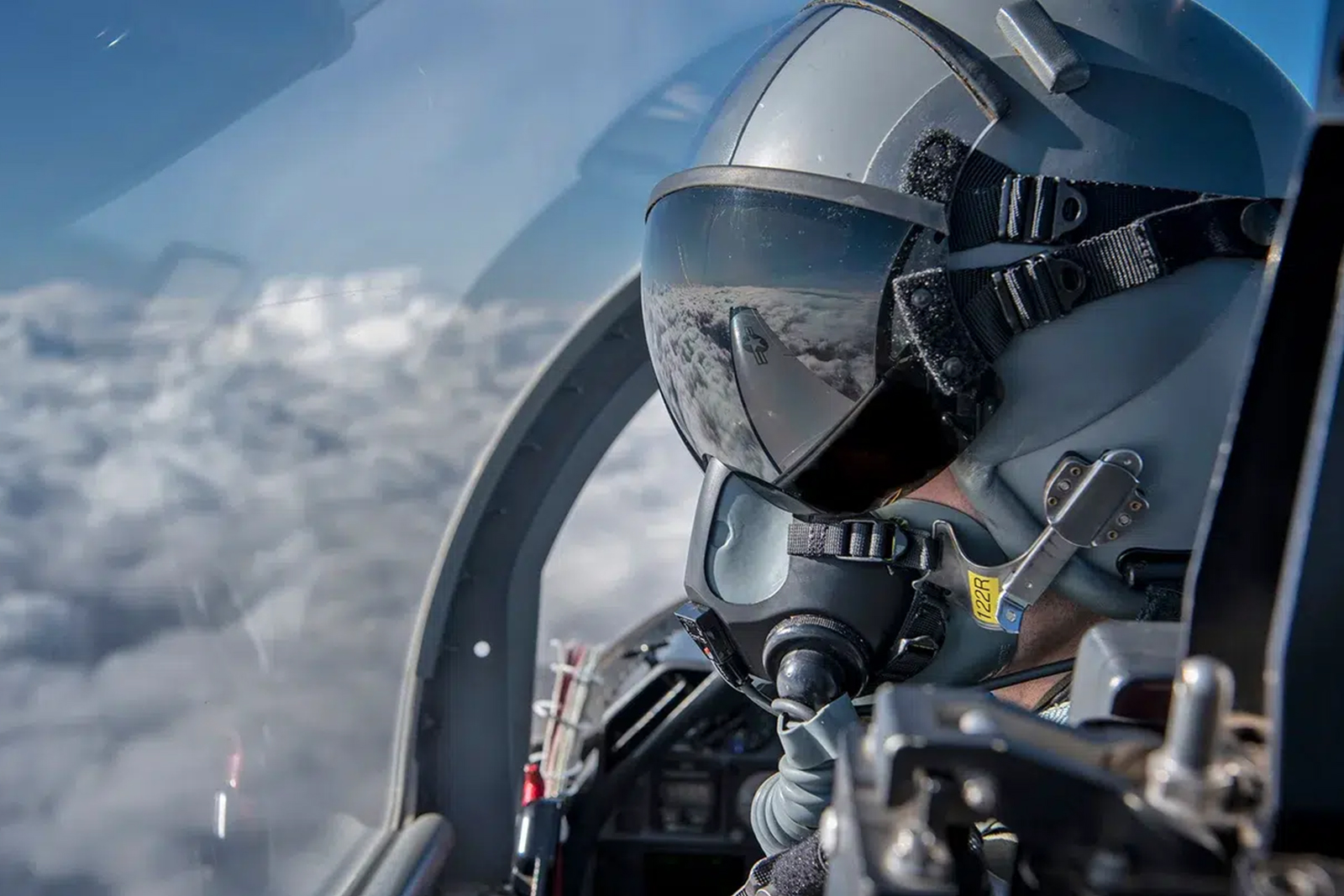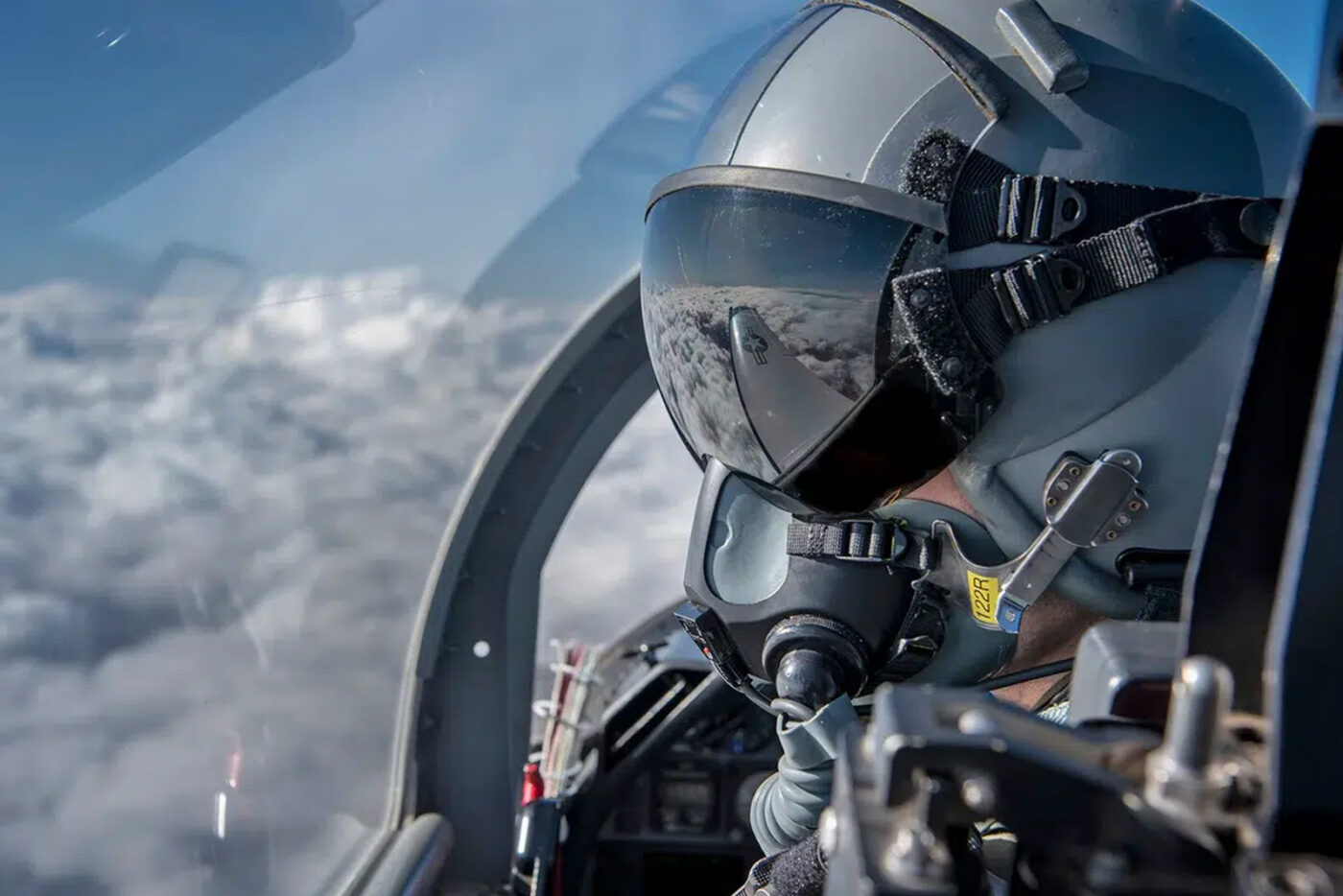Who has the aircraft?
I have the aircraft.

“You have the aircraft.”
My instructor pilot starts the first part of a three-part transfer of aircraft control. The three-part script is standard procedure since there needs to be clear understanding of who is in control of the airborne machine.
I have the next line which is “I have the aircraft.” Before I utter that, I take a quick snapshot of the position of the aircraft so that the transfer of control is seamless.
My aircraft is a T-37; a 1950s Cessna military twin-engine jet trainer and it is 3 feet from my classmate’s T-37. Yes, 3 feet. And yes, on purpose. This is the formation phase of pilot training.
Three feet from my classmate’s jet means I am looking into his cockpit, staring at our class patch on the right shoulder of his flight suit. I catch bits of my aircraft’s reflection on the shiny silver tab of the bayonet clip that attaches his oxygen mask to his helmet.
In my own oxygen mask, I smell the sweet stench of life-sustaining gas forcing enough oxygen across my lungs’ alveoli and into my bloodstream.
I suspect I’m using a lot more oxygen than my instructor, who’s flown 3 feet from other aircraft hundreds of times.
That would be hundreds of times more than me.
Until I take control.
Deep inhalation of sweet oxygen sucks my mask tighter to my face.
My hands sweat through the flame-resistant nomex gloves protecting my fingers as I get ready to take over.
On my exhale, I utter part two, “I have the aircraft.”
As soon as those words are out of my mouth and into my mask, my classmate’s aircraft is all over the place. I can no longer see our class patch clearly. The once-crisp reflection of my aircraft is now a blur of silver. The once-steady platform flown by my classmate bobbles all over the sky.
The next and final part of the three-part transfer of aircraft control should be my instructor confirming I’ve taken control by saying, “You have the aircraft.”
Instead I hear, “I have the aircraft.”
The stick in my sweaty gloved hand shakes ever so slightly as I release the controls and confirm, “You have the aircraft.” I haven’t even released my grip and I feel the control move right as we slide away from my classmate’s aircraft.
The stick shaking is another technique often paired with the positive aircraft control transfer procedure. Usually when you take control of the aircraft you lightly shake the controls as another layer of confirmation. It’s not procedure, but it’s a well-enough ingrained technique that it might as well be. For now, we just call it a “techcedure.”
The scripted banter and techniques and procedures are all to leave no doubt as to who is flying the aircraft.
Today, in my first flight of formation flying training, there is no doubt that I am not flying the aircraft well.
The reason that rock-steady platform flown by my classmate in the lead aircraft went all bobbly and screwy (technical aviation terms) is because the platform I flew as his wingman was more rocky than steady.
My instructor settles our flight path and eases our T-37 back into the 3-foot separation position.
With no seeming recollection of the last time he transferred aircraft control to me, he says, “You have the aircraft.”
My eyes are trained on my classmate’s aircraft. I can see the gauges on his instrument panel. I can see the reflection of puffy white clouds on his dark helmet visor.
Deep breath of oxygen in, rubber mask sucks my face, sweaty fingers caress the controls.
“I have the aircraft.”
Blur. Bobble. Spastic flight path.
The stick shakes and my instructor announces, “I have the aircraft.”
Once again the instructor flies us away from a mid-air collision.
This pattern continues for more times than I’d like to admit.
Finally, we are able to complete the 3-line script.
“You have the aircraft.”
“I have the aircraft.”
“You have the aircraft.”
And with that final line, I am flying 3 feet from my classmate. That means my eyes are locked on his aircraft. My only responsibility is to always keep my wings level with my lead. He is my horizon. He is my instrument panel. He is in charge of navigation. He is in charge of radio calls.
As a wingman, I relinquish some of the normal roles involved with piloting an aircraft. My primary duty is to maintain a specific position relative to lead’s aircraft. That means an utmost attention to detail, strict adherence to instructions and swift adjustments to even the slightest changes in lead’s maneuvering.
As the title indicates, the lead leads. The lead pilot takes responsibility for the entire formation of aircraft.
As a wingman, not leading, it’s easy to fall into a trap of assuming the lead pilot will take care of everything. I can sit in my pocket of air, 3 feet away and develop a sense of complacency. If I’m not actively engaged, I lose situational awareness. That loss of situational awareness blocks my ability to respond effectively when unexpected situations arise.
Instead, I need stay actively engaged in maintaining my position as well as understand the lead pilot’s intent, anticipate possible challenges and be prepared to take the lead if necessary.
The cockpit isn’t the only place where the lead-wingman distribution of awareness and responsibility flies.
Maybe it’s in the corporate world. If you’re not the big boss, your primary duty is to maintain a specific position relative to the big boss’ agenda. That means an utmost attention to detail, strict adherence to instructions and swift adjustments to even the slightest changes in the company’s maneuvering.
Not being the big boss doesn’t give you an out to assume the big boss is going to handle everything. You have to fight complacency and stay actively engaged and situationally aware so you can respond effectively when the unexpected happens.
Flying in formation is exhilarating and demands precision, trust and teamwork.
Working as part of an effective team demands precision, trust and teamwork and can be just as exhilarating (ok, almost as exhilarating).
Inside or outside the cockpit, lead or wingman, cultivate a proactive approach, stay ready to contribute, be actively engaged in the task at hand, adapt to unforeseen circumstances and be prepared to step up and step in to lead.
That way, we enhance our own skills and knowledge while contributing to the overall success of the formation.
You have the aircraft.

